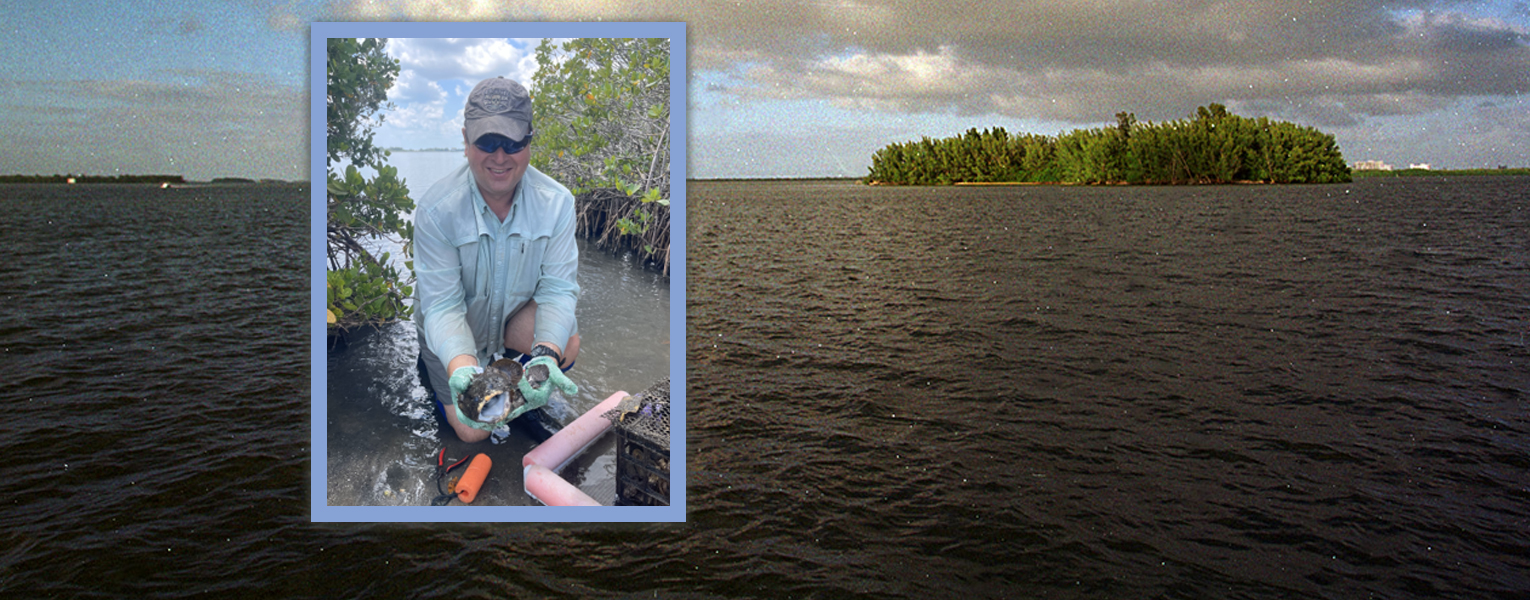1/22/2024
Postdoc Spotlight: Christopher Moore, Ph.D.
Parasites Lurking in the Indian River Lagoon
By Bethany Augliere
Most people wouldn’t think an abundance of parasites in the local environment is a good thing, but when they aren’t there, it’s a sign that there’s a problem, according to Christopher Moore, Ph.D., a postdoctoral fellow at the Florida Atlantic Harbor Branch Oceanographic Institute.
Moore studies the diversity of parasites in the Indian River Lagoon (IRL), a 156-mile-long estuary that spans from Ponce de Leon Inlet in Volusia County to the southern boundary of Martin County. “If there's pollution or disturbance in the environment that will also affect the diversity of parasites that you find living in an area,” he said. That’s because if the parasites aren’t around, it means the host animals aren’t either, like large fish or dolphins.
It’s important that people understand “most things (that) make you sick, like parasites, have co-evolved with humans over evolutionary time — to make you sick, but not really sick,” Moore said. As a parasite, “if you kill your host, you're not able to further yourself.”
Moore researches parasites that require multiple hosts to complete their life cycles. For instance, a parasite might start off in an aquatic snail, he said. That snail is now infected for life “and it's like a factory, churning out the little larval parasites that then go on to infect a second host,” which might be a mud crab, stone crab or a small fish. At this stage, the parasite won't develop any further in this second host and it won't complete its life cycle unless it's eaten by an appropriate final host, which is usually something larger, like a larger fish, a wading bird, sharks or dolphins, he said. “Where you have low host diversity you're also going to have low parasite diversity; if the hosts aren’t there, then the parasites won’t be there either,” Moore said.
The IRL is a stressed ecosystem, due to well-publicized problems like runoff, he said, resulting in algal blooms, low oxygen events and fish kills. “This happens pretty consistently,” Moore said. “To date, no one has assessed parasite diversity in the Indian River Lagoon, and our working hypothesis was that it too would be impaired and affected.” By using the presence and diversity of parasites as a proxy for abundance of their hosts, like fish and birds, in this way parasites can act as indicators of overall ecosystem health.
To do this work, Moore sets out collectors filled with oyster shells as stable habitat to attract snails, crabs and small fish, including blennies and gobies. Once collected, he brings them back to the lab to examine what parasites might be living in their tissues, viewed with a microscope.
Preliminary results indicate that parasite diversity in the IRL is surprisingly low. He is using meta-analysis to assess how these results compare to similar ecosystems in the tropics or subtropics “The parasite diversity is lower because the hosts that the parasite needs aren't here, so then the question becomes, well, why aren't the hosts here?” Moore said. “There's no simple answer.” It could be due to overfishing, pollution from runoff and many other things.
Now at Florida Atlantic, quantifying those impacts is on-going research inside the lab Moore works in, led by Michael McCoy, Ph.D., associate professor at Florida Atlantic Harbor Branch. The researchers use parasites as indicators for the presence of needed hosts to determine what is missing in the food web. Why they are missing could help scientists and wildlife managers determine more about the overall health of the IRL and potentially, how to fix it, he said.
If you would like more information, please contact us at dorcommunications@fau.edu.
The Road to Florida Atlantic
Prior to research at Florida Atlantic, Christopher Moore, Ph.D., earned a bachelor’s degree in classics from Davidson College in North Carolina, bachelor’s degree in biology from University of Maryland, College Park, and a doctorate degree in marine ecology from East Carolina University.
He also worked as an ecologist for the Montgomery County (Maryland) Department of Environmental Protection.
Moore is now a postdoctoral fellow at Florida Atlantic Harbor Branch Oceanographic Institute.
